The Gemera Hybrid, Explained by Christian von Koenigsegg
[March 6, 2020]
Sporting ridiculous prices, insane horsepower, and wild designs, Koenigsegg makes incredible (and ludicrously unachievable) supercars. Koenigsegg is also usually very proud to display its latest models, with company CEO Christian von Koenigsegg often showcasing his company’s creations. So when the COVID-19 virus shuttered the 2020 Geneva International Motor Show, Koenigsegg decided to take to the Geneva show floor anyway.
In an interview with Top Gear from the closed Geneva show, Christian von Koenigsegg explained his company’s latest creation, the two-door, four-seat, eight cup-holder, hybrid-powered Gemera.
“It is a mid-engine combustion car, so in my mind it’s a proper, traditional concept of a mega-car,” Koenigsegg says. “You have a combustion engine in the middle, you have the mid-engine look, but then there are some tricks to this.”
The Gemera utilizes a rather interesting 2.0L combustion powerplant, which then ties to a 15 kWh battery and three electric motors.
“It’s only a three-cylinder, but it’s got our unique three-valve technology that really transforms the way the engine can respond and sound and how it can run, in this case, a twin-turbo setup in sequential ways with the use of these three valve,” says Koenigsegg. “We have 400 Nm [295 lb-ft] of torque at 1,700 rpm from a three cylinder. And we have 600 Nm [440 lb-ft] over a broad rev range, and we have 600 hp. And the engine only weighs 70 kilos [154 lbs].”
The motor also revs to 8,500 rpm, and not necessarily on gasoline. “It runs on CO2 neutral fuels,” Koenigsegg explains. “This engine is designed for bio-fuels, for solar-fuels. You can run it on, worse case, petrol, it has a flex-fuel capability, but that’s not the idea. It’s like running an EV on power from a coal plant; you can do it, but you shouldn’t.”
The 2.0L three-cylinder combustion engine powers the front wheels, with assistance from an electric motor. “It’s a total of a 1,000 hp, 1,000 Nm [737 lb-ft] on the front, and one 500 hp electrical motor for each rear wheel, with 1,000 Nm each,” he says. “When you combine all of these numbers in a speed range – we don’t top up the power levels on top of each other, we want to spread them out for torque – if you look at our curve, you have 3,500 Nm of torque [2,581 lb-ft] and 1,700 combined horsepower.”
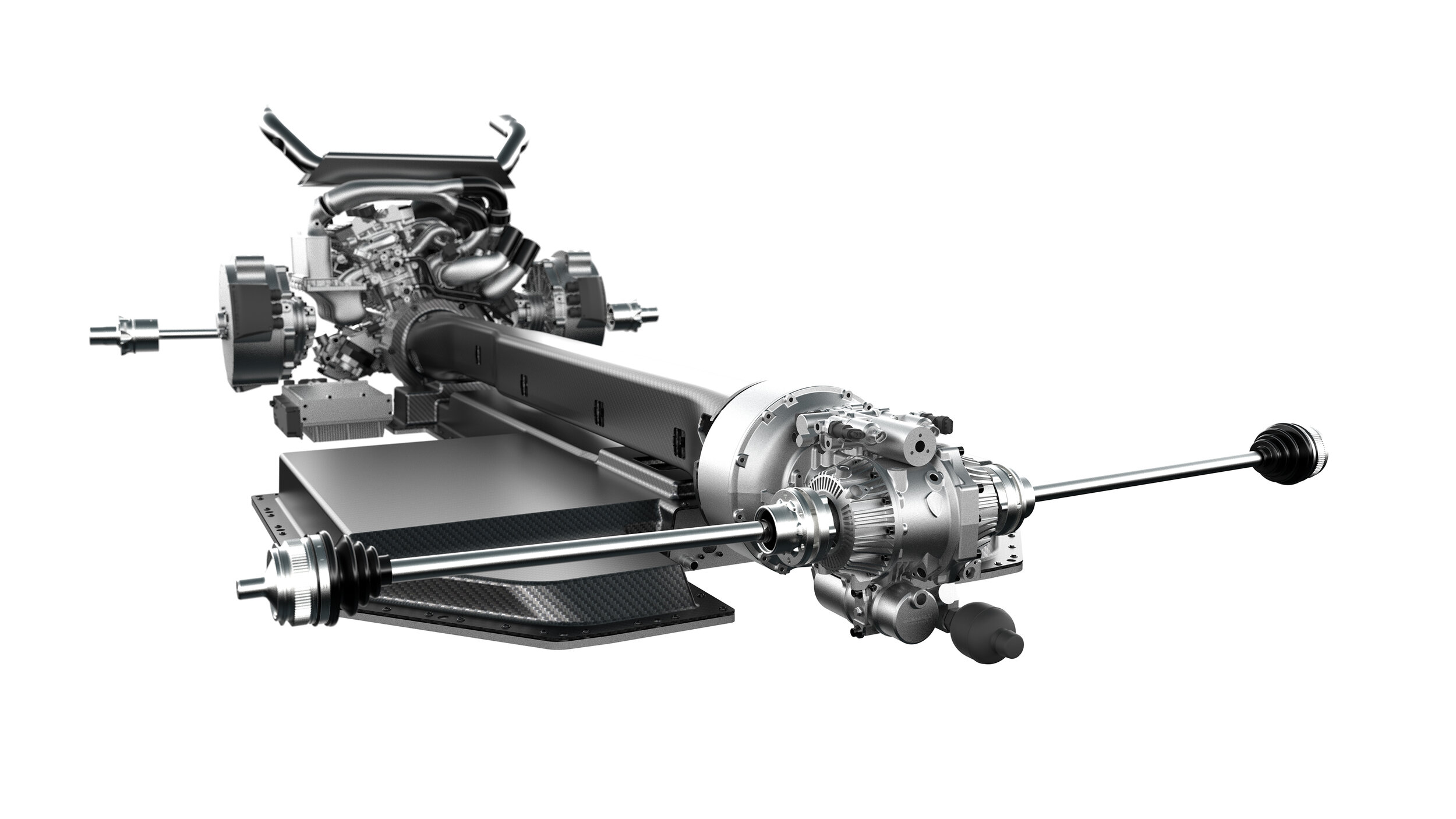
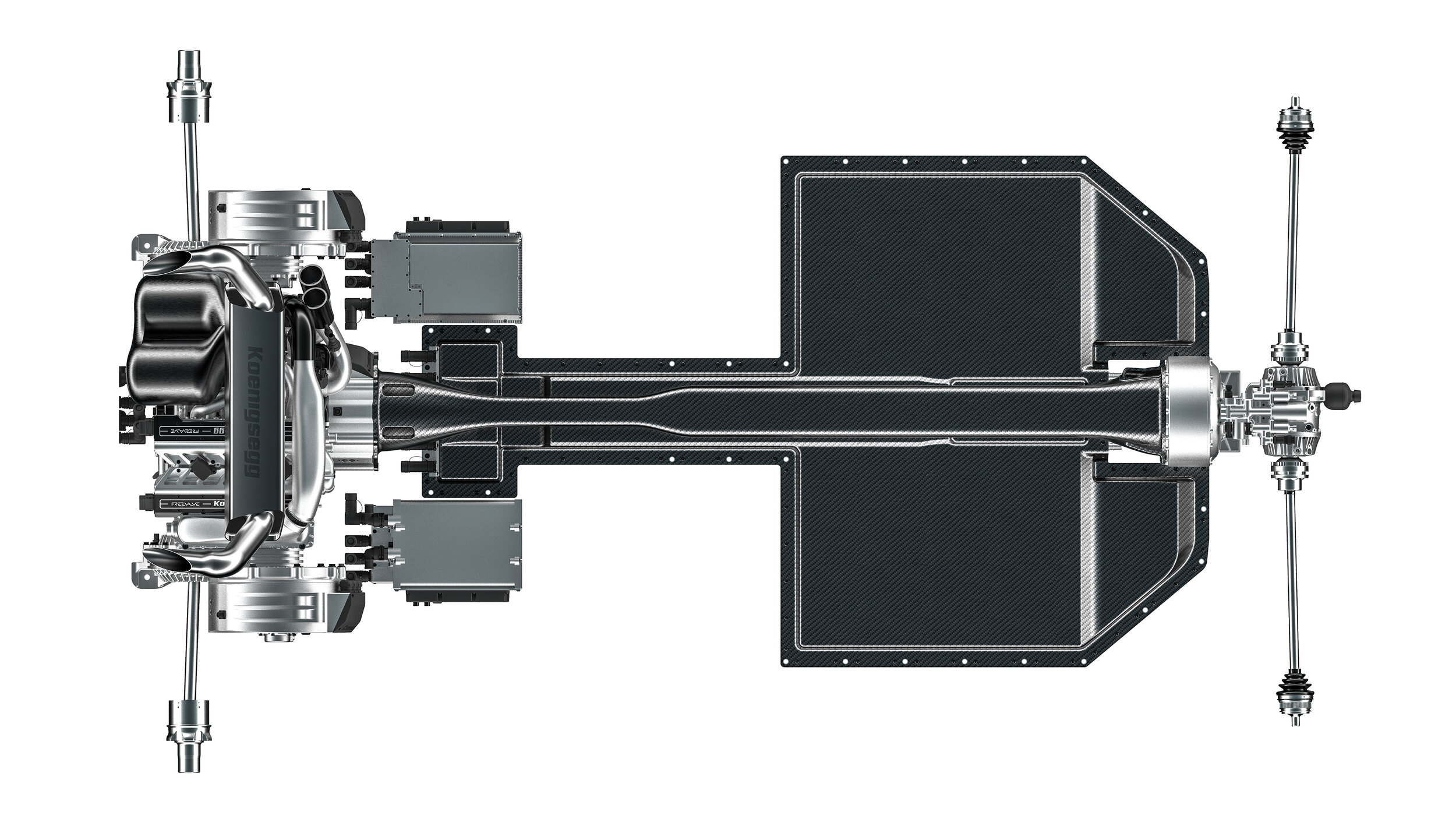
The power hits all four wheels (the car also features all-wheel steering) to propel the Gemera from 0-60 in 1.9 seconds, reaching a 250 mph top speed. “It has a range of 1,000 km [621 miles] if you juice up the battery full,” says Koenigsegg. “That is a 50 km range [only on the] battery.”
The 15 kWh battery resides under the front seats.
The combustion engine is also quite a technological wonder. Using Koenigsegg’s camshaft-free design, the system can control each valve individually, allowing versatility with the turbos and the engine’s tone.
“What’s different with this [three-cylinder engine] is that it’s a very big one,” Koenigsegg adds. “Normally, a three-cylinder is a 1-liter engine, and this is a 2-liter engine. So we have similar sized pistons, and stroke and bore, like in our V8, so every combustion is big, but it’s just fewer of them.”
“We can even run two-stroke with this in certain rpm ranges – then it sounds like a straight-six. You can really play with the three valves and the titanium exhaust system with an echoing effect, so it will have a very unique sound, but a big sound. It’s not like a silly, tiny thing.”
Externally, the Gemera is striking in its uniqueness. This was achieved through visual trickery, says Koenigsegg. “We trick the eye a bit. Everything is blown up proportionally. We have 22-inch [rear] wheels, 21 inch in the front, so they are bigger. And then there is no handle on the door, so there is no human size component you can reference for the size of the car.” The four-seat Gemera, he says, is basically 25% larger than Koenigsegg’s other designs.
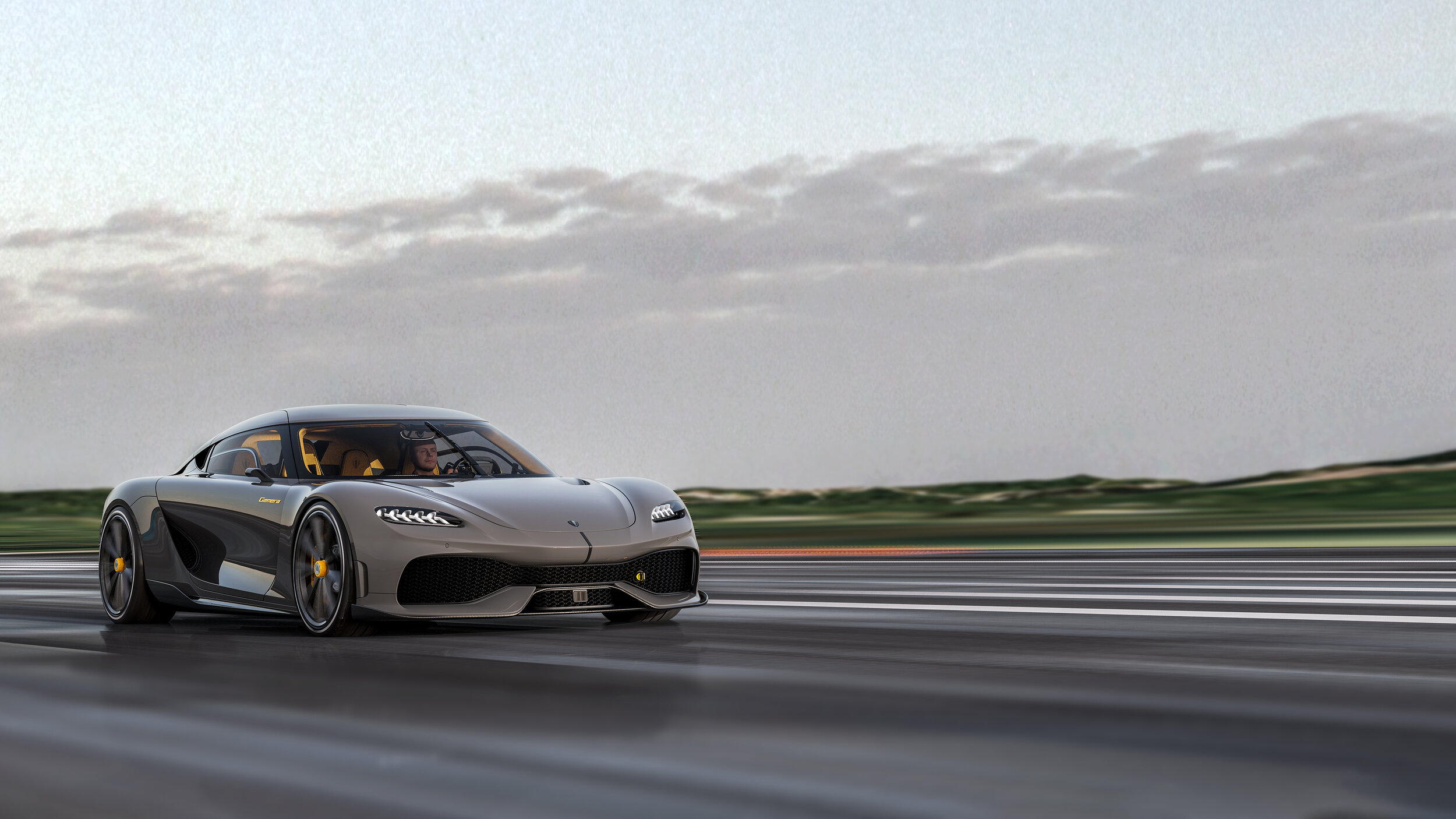
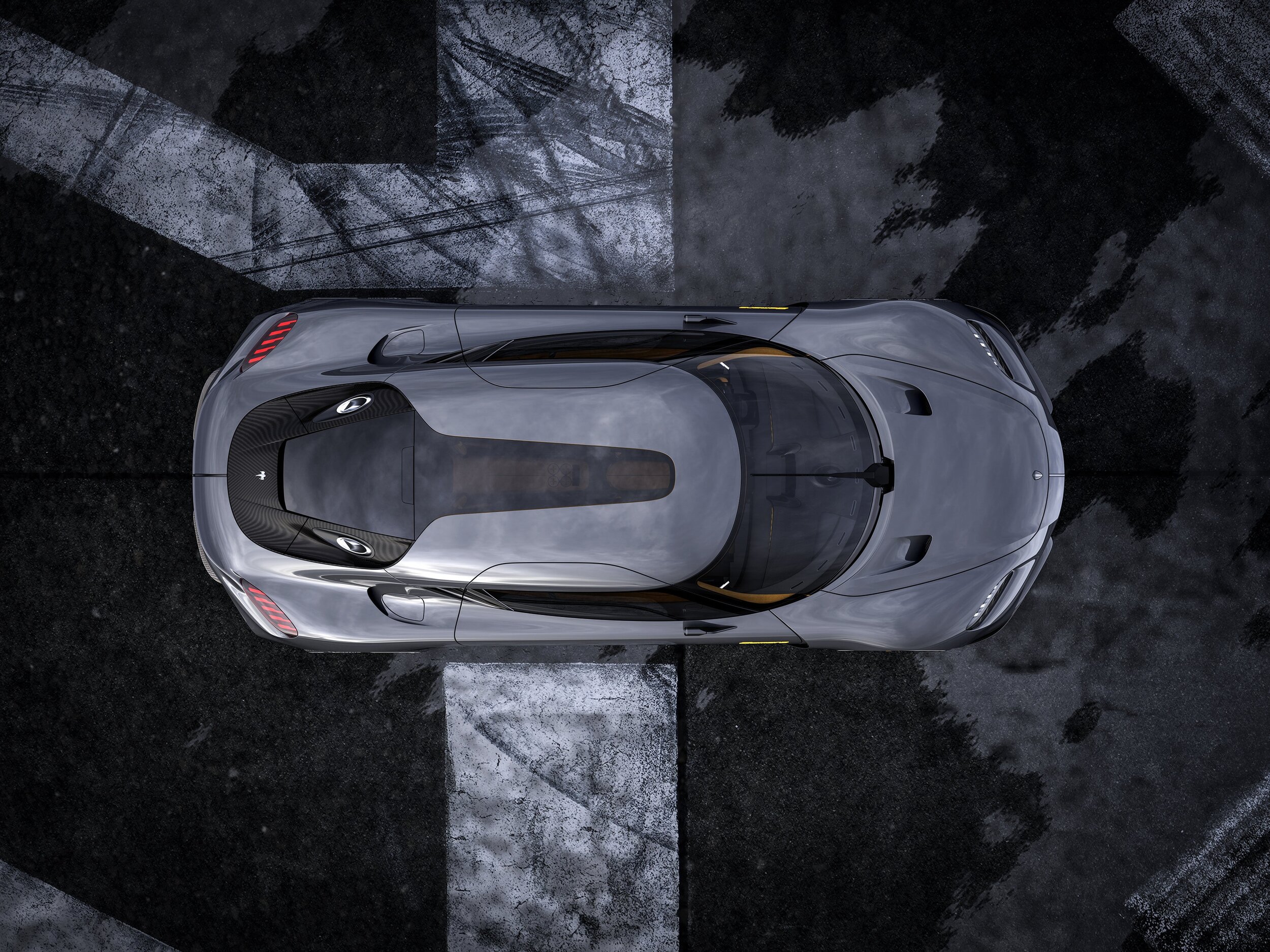

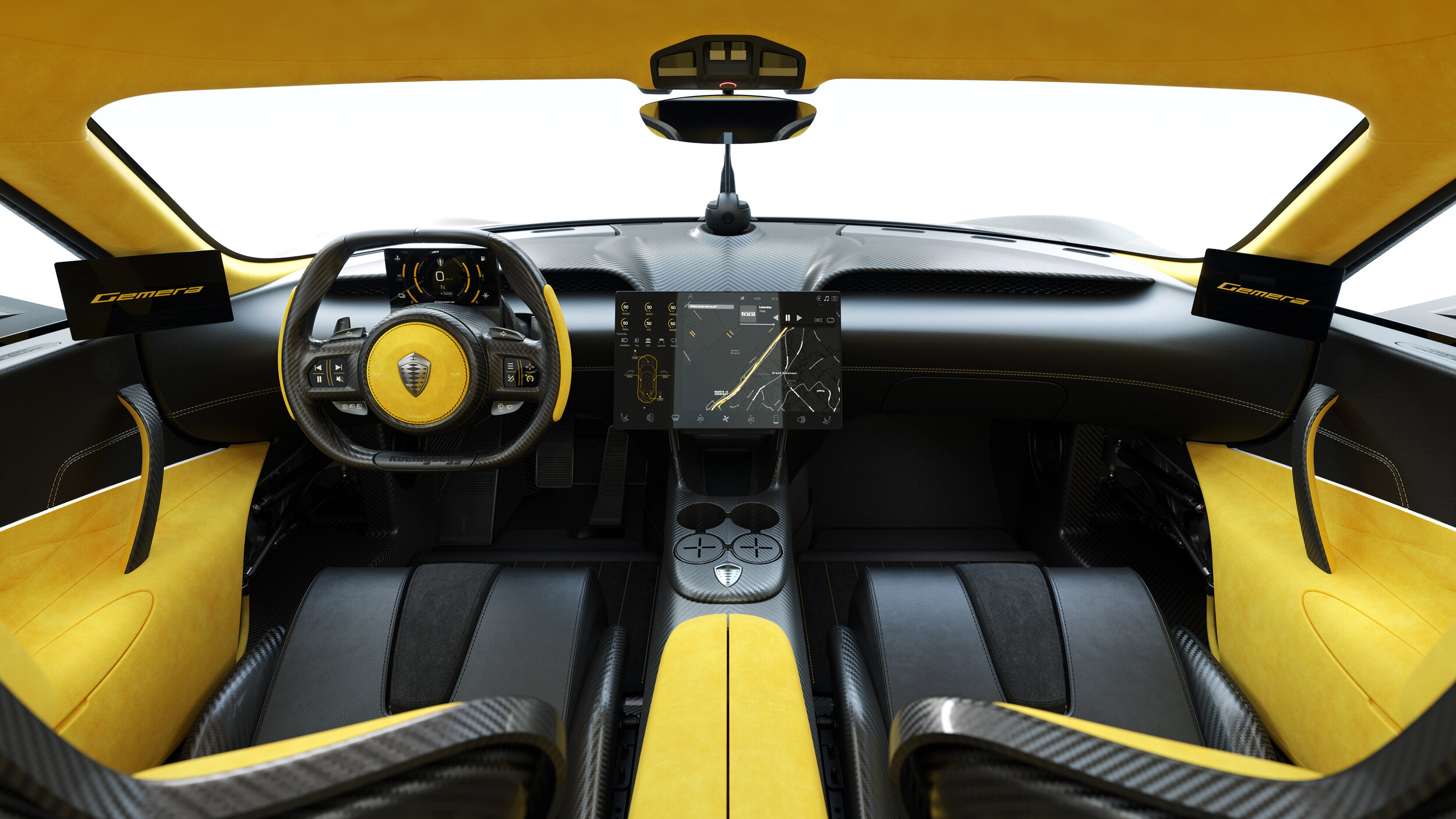
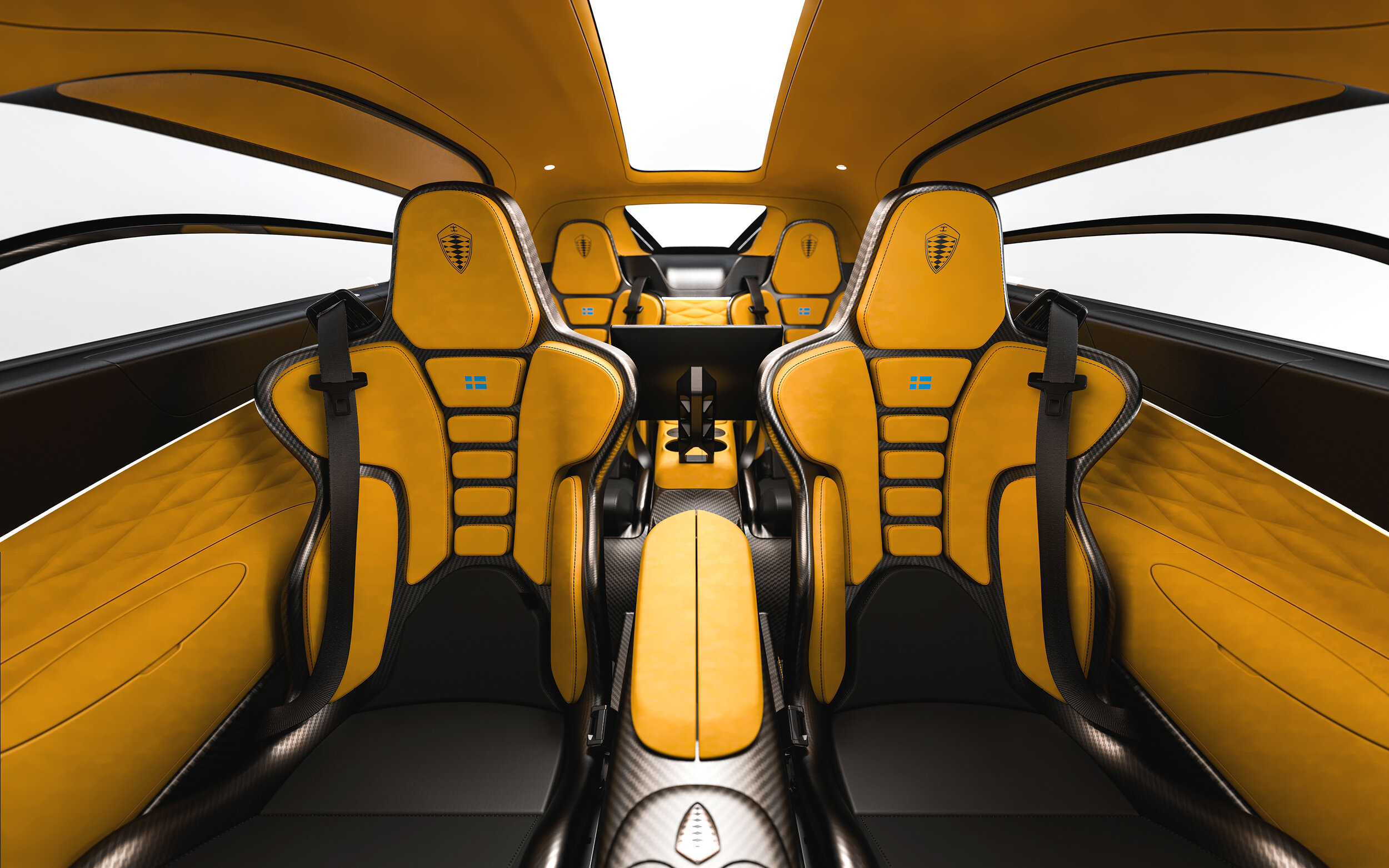
Speaking of fitting things, a small combustion engine and efficient electrical components mean the Gemera can fit three carry-on bags in the rear and one in the frunk.
The doors, as you might have guessed, are also unique, pivoting to ease ingress and egress for all passengers. Each hinge is made of hollow steel instead of aluminum because of the needed stiffness. Carbon fiber is then used for reinforcement.
“We kind of bent around the parts in CAD, and suddenly we got another feature that the door does not only swing out and rotate, it also swings upwards, so you can clear...the curbs,” he points out, adding, “The large roof structure gives a lot of rigidity. As far as we’re aware, it’s the stiffest four-seater car on the planet.”
Koenigsegg also touched on the door’s design concept. “I envisioned this car with someone driving up to the Oscars gala, and the star comes out from the back. There is no folding of seats or getting past the B pillar. You walk out as gracefully as if you were sitting in the front.”
In today’s age of full electrification, that begs the question of why go with a hybrid powertrain? Simple, says Koenigsegg, going full EV would make the car too heavy. “We can make it lighter for the same type of power and size,” he notes. “But, of course, performance also becomes better because when [the car’s] lighter, braking becomes better, cornering becomes better, and acceleration becomes better.”
Koenigsegg intends for the Gemera to weigh approximately 1,880 kg, which translates to just shy of 4,150 lbs.
The company is expecting to produce 300 Gemeras with a price tag of around $1.7 million each. He explains its “lower” price is achievable because, unlike the Jesko, which will see only 125 production units and sell for $3 million apiece, the Gemera benefits from economies of scale.
“Still very expensive, of course, but you get two more seats,” Koenigsegg smiles.
(Images courtesy Koenigsegg)
Like what you read? Follow us on Google News and like us on Facebook!








